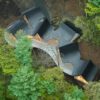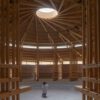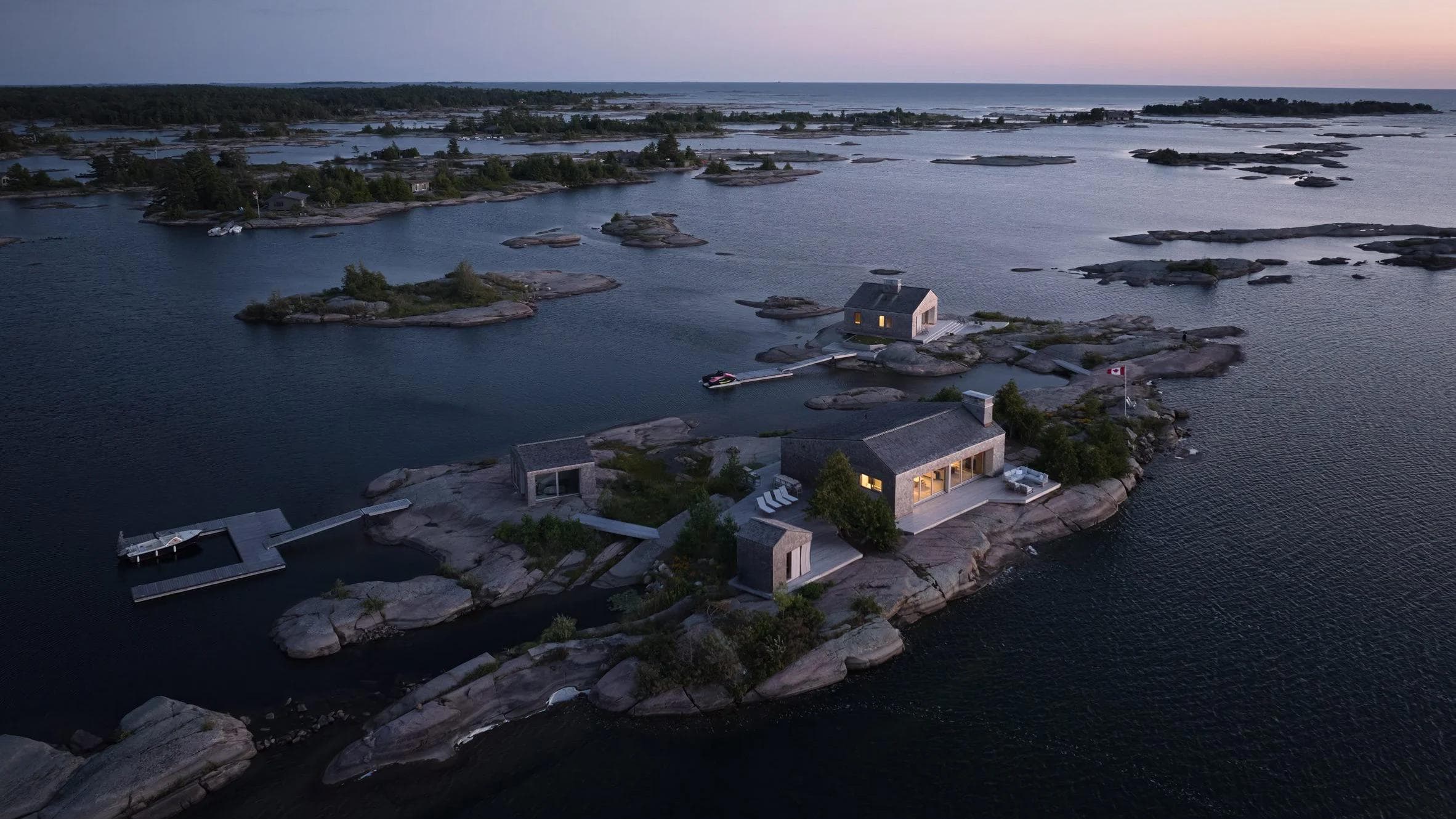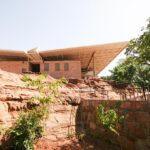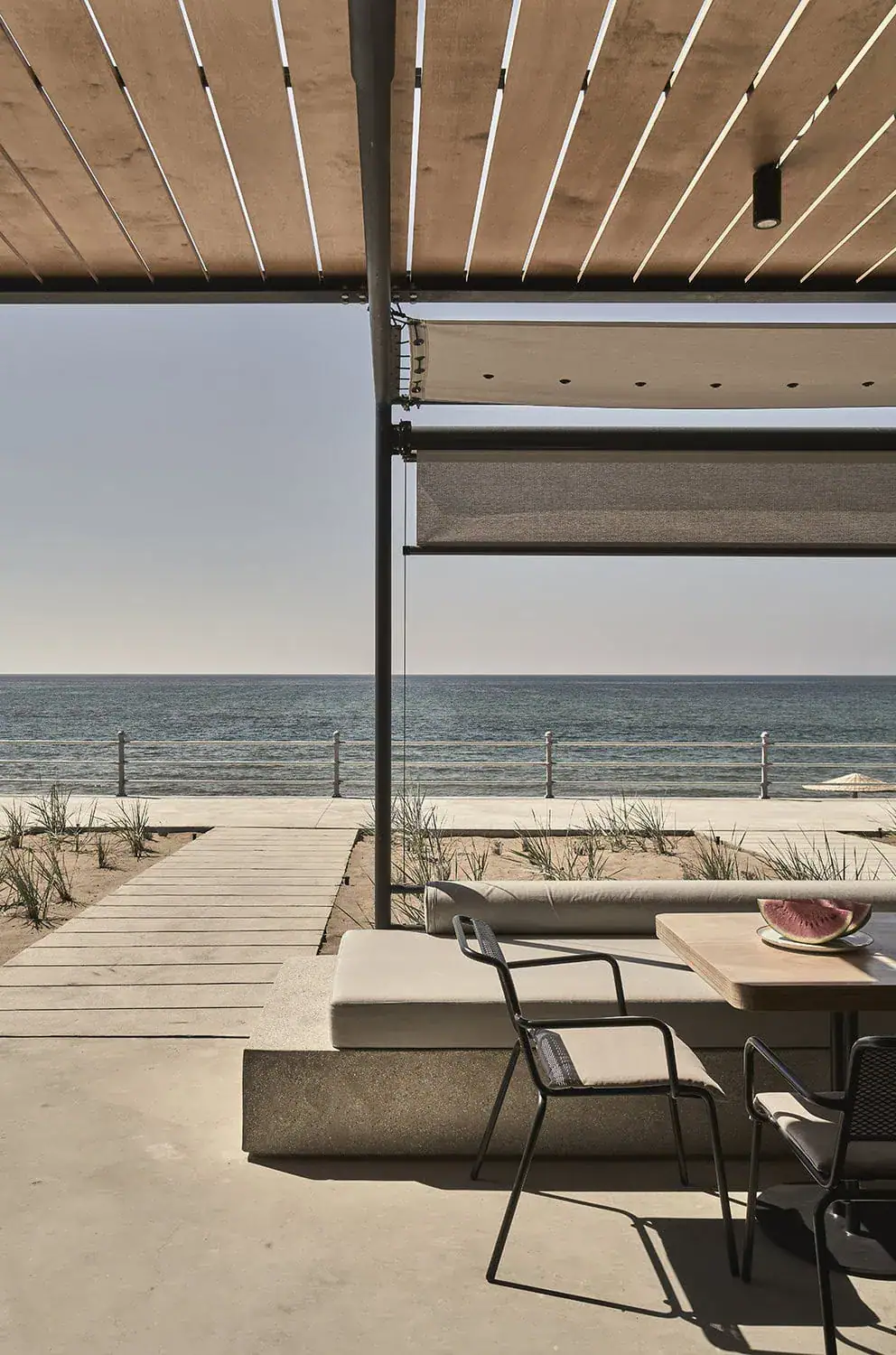On a remote archipelago in Ontario, Canada, Akb Architects designed a wooden summer residence: Whistling Wind Island. A wild, enduring property, just like the place where it was built.
Most people probably think of a property in a warm, temperate environment when they hear the term ‘summer house’. A second home on a sandy beach or perhaps a country retreat surrounded by meadows, fields and forest. Few probably associate it with a residence on a remote rocky archipelago in the north-east of Lake Huron.
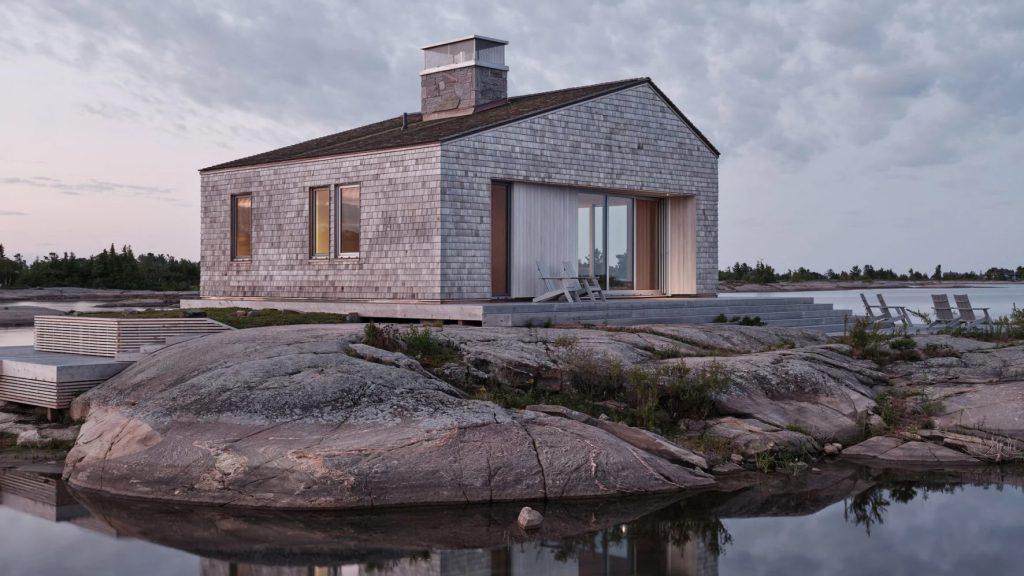
Here, in Pointe Au Baril on the coast of Georgian Bay in the Canadian province of Ontario, you will find Whistling Wind Island, one of the furthest inhabited islands in the archipelago from the mainland. The perfect place for a summer house – thought a passionate kitesurfer and commissioned Akb Architects to realise the dream residence for him and his family. The focus was on minimising the impact on nature. Instead of a single (large) house, the decision was therefore made to construct a total of four buildings; the two larger ones were also built on the sites of houses that had been demolished in the past in an environmentally friendly way.
In harmony with nature
The Toronto-based architecture firm designed four classic, single-storey houses on the one-hectare Whistling Wind Island with gabled roofs and façades made of giant arborvitae shingles, whose silvery, weathered look reflects the appearance of the surrounding rocks. The main house is located on the highest point of the island, right next to the detached sauna and a small external warehouse with a fitness room. A bunkie (Canadian for guest house) is located a little way off on a rocky outcrop.


‘The cottage consists of a bedroom and a children’s room, a shared bathroom as well as an open-plan cooking, living and dining area and a laundry room,’ says Akb Architects. The main house covers 167 square metres. Its rooms are clad in light-coloured cedar planks, the horizontal orientation of which is intended to emphasise the harmony with the landscape, as the studio explains.
Intensive Erlebnisse
Large, triple-glazed sliding doors in both the Cottage and the Bunkie provide a magnificent view on the one hand and a connection between the indoor and outdoor areas on the other – as well as sufficient natural ventilation. The glass doors and windows are slightly offset inwards; the resulting overhangs not only shade the interior, they also create niches for retreats and workspaces. Both homes have a fireplace, framed by granite from the neighbouring community of Muskoka in the cottage and natural stone in the bunkie.

The guest house also offers space for four people with two bedrooms, a bathroom and a living/dining area with an open-plan kitchen. ‘The solid construction of the buildings optimises their cosiness,’ says Akb Architects. ‘We know that the houses can withstand extreme weather conditions. At the same time, the manageable size and cosiness of the interiors create a cosy refuge that is experienced most intensely at sunset.’
Natural parameters
Wooden verandas around the two larger buildings also provide a panoramic view of the lake and the archipelago. Footbridges and narrow wooden bridges over rock and water connect all four houses and the boat moorings. Akb Architects deliberately designed them asymmetrically and integrated steps to adapt them to the topology of the terrain. ‘There is no front or back here,’ explains the studio. Nature dictates its parameters; the architecture follows it – and not the other way round.


Nature also dictates the duration of use. As Whistling Wind Island is only accessible by boat, the summer residence is habitable until November at the latest. By then, the first ice usually forms on the lake off Pointe Au Baril. During the usually harsh winters, retractable, garage door-like aluminium blinds are lowered on the windows and the floating docks are taken out of the water.
‘Surrounded by open water and vast skies, Whistling Wind Island is constantly exposed to changing water levels and weather conditions. Here, the morning sun can be followed by sudden hailstorms,’ says Akb. ‘The wind conditions make Pointe Au Baril the ideal place for someone who wants to pursue their passion: kitesurfing’.
Text: Michi Reichelt
Bilder: Doublespace


